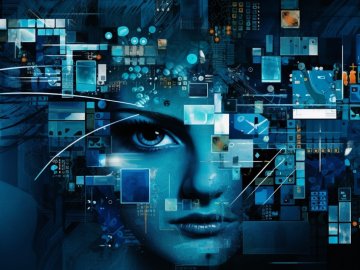In the past few years, there has been plenty of discussions around Artificial Intelligence (or AI), and where it fits within our society. Whilst some people are cynical of AI, other people see it as a tool to assist them throughout their day-to-day lives. However, as many people learn about AI through the media and other forms of entertainment, we want to understand more about what it actually is, and whether there is any truth to those (somewhat scary) blockbuster depictions.
History of AI
AI is a concept that’s been around for a lot longer than many of us realise. In fact, Artificial Intelligence has been around since 1956, and has been based on the theory that every aspect of human learning can be repeated by a machine. The general idea behind AI is to create a computer system that can understand how to resolve problems in a similar way to us, and since the 2000s, AI has slowly worked towards that goal.
The AI Basics
Artificial Intelligence (AI) refers to the simulation of human intelligence processes by machines, especially computer systems. These processes include learning (the acquisition of information and rules for using the information), reasoning (using rules to reach approximate or definite conclusions), and self-correction. Particularly sophisticated AI applications are capable of tasks such as speech recognition, image analysis, natural language processing, and even decision-making.
At the core of these AI systems are machine learning algorithms that use statistical methods to enable machines to improve with experience, and deep learning neural networks that model computation after the human brain's neural circuits, giving the machine the ability to learn and interpret complex patterns. The algorithm is trained on a large set of data, learning patterns and making decisions based on those learnings, with its performance improving over time as it is exposed to more data and iteratively adjusts its model to improve the accuracy of its predictions or decisions.
Although this might sound like AI has infinite possibilities, AI programs are not able to do anything other than what they are programmed to learn within their set task. Alongside this, the way that AI collects data and develops responses can be supervised and inputted by us. Currently, AI has a long way to go before it can be said to perfectly replicate humans, and even then, it will still require human oversight.
What AI Can Do
Whilst AI may seem like a big change in how we currently use technology, our day to day lives are already impacted by many forms of AI and machine learning mechanisms. Think of your streaming service recommendations that are tailored to your interests, or when you play games against a computer that gets harder every level, these are all forms of AI that are meant to support your experience of technology. All of these everyday encounters require machine learning and AI, with the intention to become more accurate as you use them.
In the past few years there has been a significant advancement in how AI is being used and how we can interact with it, and we’re beginning to see how it can influence our lives in more significant ways. Now, instead of being a machine competitor behind a game of virtual chess, we are able to interact with AI chatbots that can answer our questions and tell us about the weather. Self-driving cars are another example of how AI may be used in the near future, and whilst the technology isn’t perfect yet, modern cars are already using AI features to support with getting us from A to B.
Chatbots
As we’ve discovered, many people are only just starting to notice the impact of AI, and there has been a lot of discussion in the media about its use along with recent AI tools. The rise of AI chatbots, like ChatGPT and Bard AI, has seen a new wave of AI technology that we can interact with on a much larger scale. Chatbots have often been designed to make it easier to find out information, and they have been programmed to understand how we talk, so they can respond to us in a similar way.
However, with multiple different chatbots out there, all with their own unique capabilities and limitations based on their design, it’s a good idea to research each properly to see which will be most likely to support you.
Currently, there are many valid concerns over data protection and the accuracy of the information that AI chatbots provide, so it is important to remember that chatbots are still in development and as such, have imperfections and limitations. Essentially, the chatbots we see today are still work in progress, and as with everything you see online, it is important to fact-check any statements made by them, and to understand that chatbots are by no means an identical substitute for human knowledge and experience.
Considerations for AI
Currently, there are a lot of concerns about how AI is being used, from writing essays for school children to creating hyper-realistic photos that can be used to misinform people. Alongside this, there have been worries about how AI can appropriately safeguard people from online harms. Many people have raised concerns after seeing chatbots used inappropriately. In response, AI creators are now training their AI models to reject inappropriate requests and include more accurate responses to try to make AI a safer experience for everyone.
As technology has slowly advanced to deliver automated tasks and improve our day-to-day lives, AI still has a lot to learn before it can come close to replicating the human experience. Even then, policies and governance around AI are only just beginning to consider the benefits and considerations around AI usage, and there is plenty of ongoing discussion about whether AI should be restricted in various walks of life.
Further information
For now, there is still a lot to learn about AI, and this will probably be the case for a while, but to help answer any of your questions, we have created an AI hub for teachers to find out more about what AI can and can’t do, and how it can be used so far.
Alongside this, if you are a teacher concerned about AI in school, you can read our latest article about what to consider, and how to safely approach AI, with your students.






